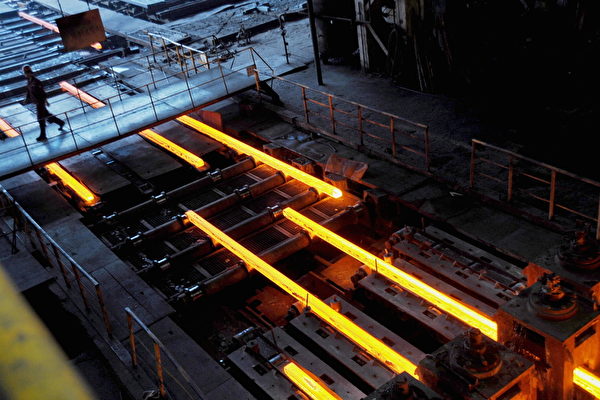In the first half of this year, Chinese listed steel companies have reported losses in their net profits. Among them, Ansteel Group ranked first with a loss of 26.89 billion yuan. Industry insiders revealed that the profitability of the steel industry in the first half of the year has reached one of the lowest levels in nearly a decade.
As of August 30, 27 Chinese listed steel companies have released their half-year reports for 2024. Among them, only four steel companies, including Nansteel Group, have positive net profits, while the remaining listed steel companies have seen continuous declines in net profits, leading to expanding losses.
Among the steel companies experiencing losses, Ansteel Group leads with a loss of 26.89 billion yuan. Shandong Iron and Steel saw a 3.73% year-on-year decrease in operating revenue in the first half of the year, with a net profit attributable to the parent company of -968 million yuan, a decrease of 287.78% compared to the same period last year. Magang Group incurred a net loss of 11.45 billion yuan in the first half of this year, following a 22.35 billion yuan loss in the same period last year. Baosteel Iron and Steel reported a loss of 720 million yuan in the first half of the year. Chongqing Iron and Steel witnessed a 58.4% increase in net losses, reaching 689 million yuan. Zhongnan Group’s net profit decreased by 142%, dropping from a profit of 3.14 million yuan in the same period last year to a loss of 449 million yuan in the first half of this year.
Regarding the reasons for the losses, the “Xin Huanghe” under Jinan Daily News Group stated on September 1 that in the first half of the year, the steel industry continued to experience a weak market environment, leading to industry-wide losses. Weak downstream demand, fluctuating steel prices at a low level, and a downward trend in raw material prices, coupled with limited decreases compared to sales, further squeezed enterprise profit margins. Recently, the China Iron and Steel Association released data showing that the domestic market composite steel price index, plate price index, and long material price index all decreased by 4.9%, 6.4%, and 6.4% respectively.
Shandong Iron and Steel also mentioned that in the first half of 2024, the steel industry faced significant challenges with oversupply, weak demand, low prices, and high costs, continuously compressing enterprise profit margins, leading to a substantial reduction in the gap between purchase and sales compared to the same period last year.
Industry analysts pointed out that the decline in steel prices this year, combined with relatively high iron ore prices, has put pressure on the profitability of steel companies. The first half of the year saw the steel industry’s profitability reaching one of the lowest levels in nearly a decade, with prices of different types of steel declining simultaneously.
Wang Ying, Chief Economist of the China Iron and Steel Industry Association, recently stated that China’s steel production in the first half of the year was 530 million tons, a year-on-year decrease of 5 million tons or 0.94%. In contrast, steel consumption in China during the same period was 478 million tons, down by 3.3%, indicating weaker demand.
Jiang Wei, Deputy Secretary of the Party Committee, Vice President, and Secretary-General of the China Iron and Steel Industry Association, recently wrote that the “internecine” vicious competition is a key factor contributing to the current plight of the steel industry. In recent times, the steel industry has shown signs of “internecine” vicious competition, with a trend toward further escalation. Some enterprises have ignored the industry’s development stage adjustments and the decline in steel market demand. They pursued scale benefits through simplistic, extensive, and low-level means, relying on price wars to seize market share, severely disrupting market order and leading to continuous declines in steel prices and a significant decrease in industry profitability.

